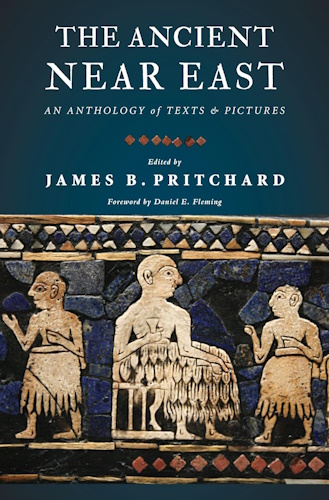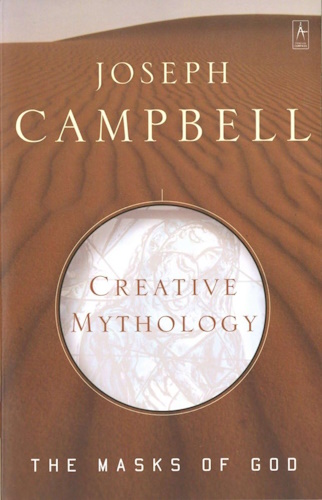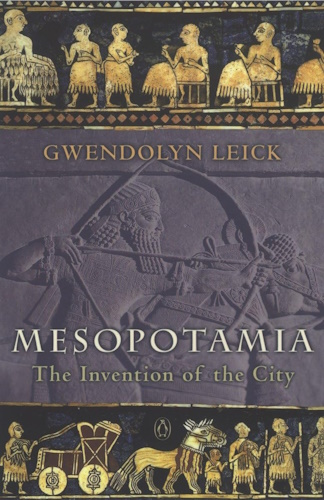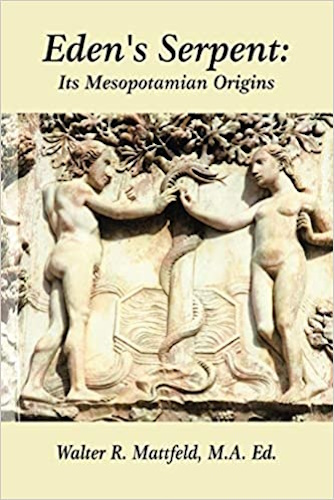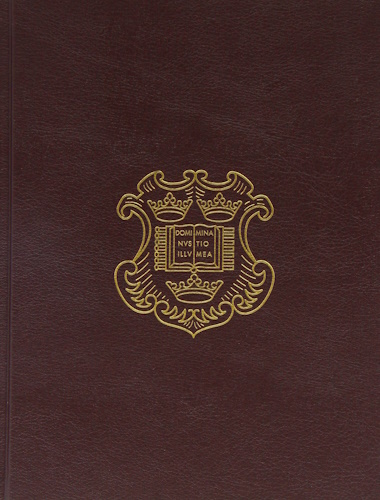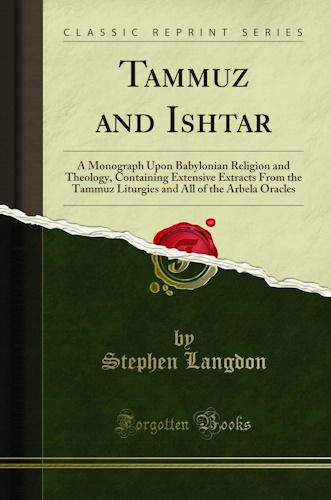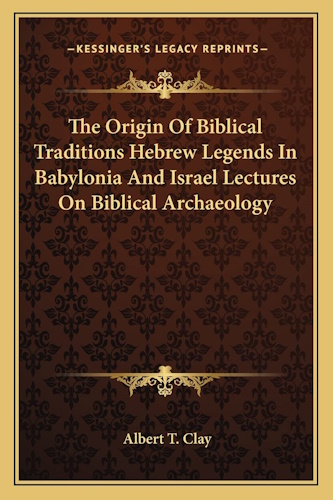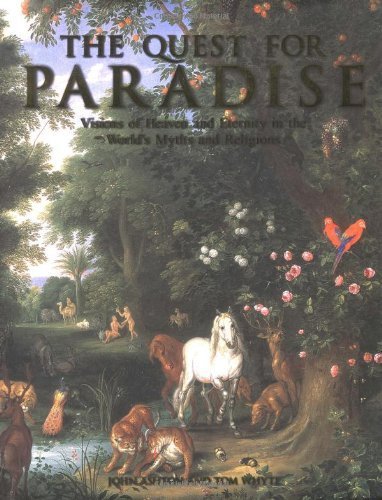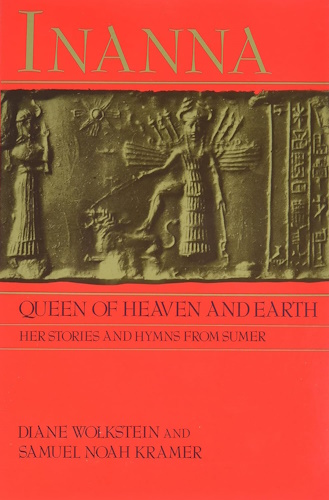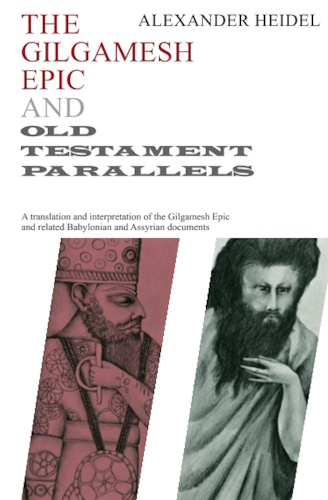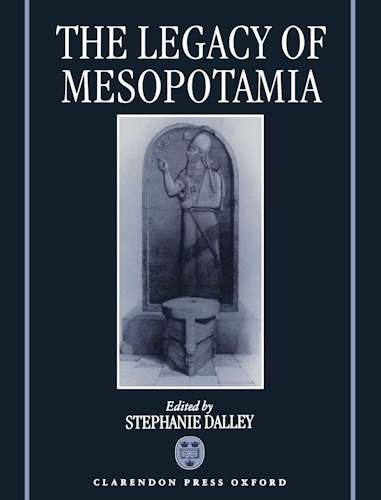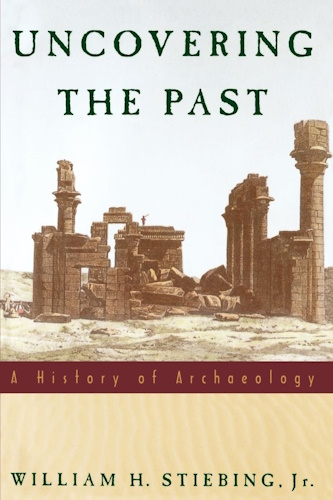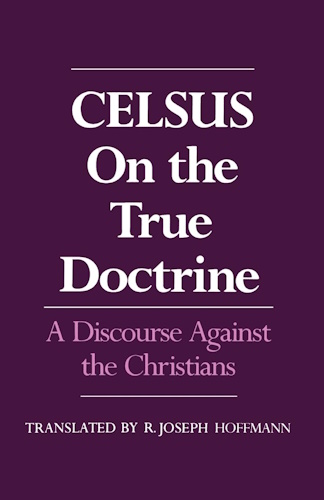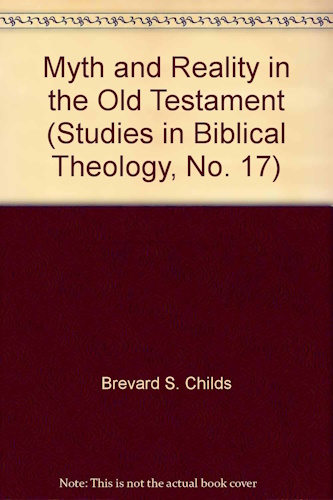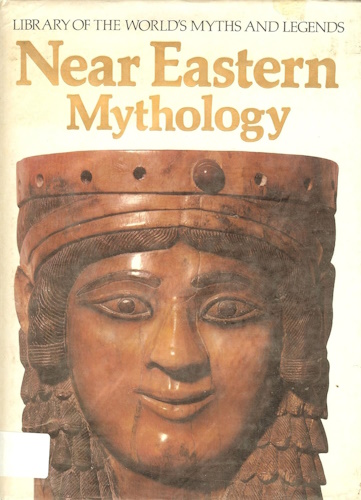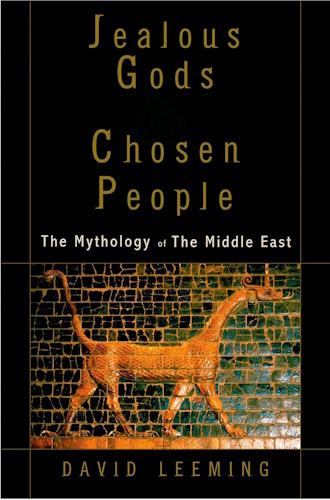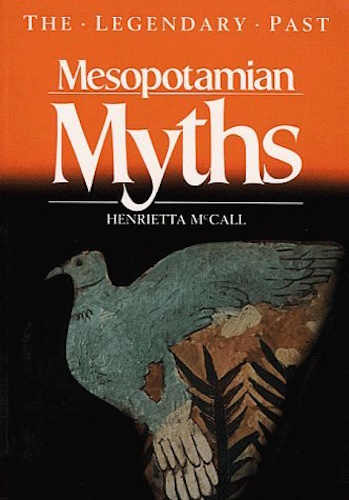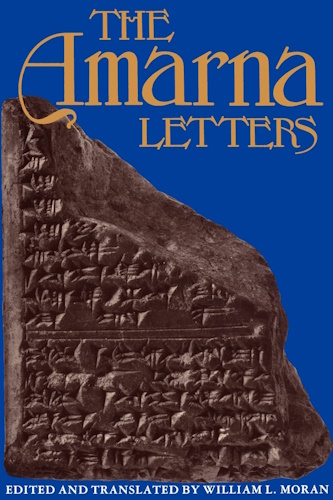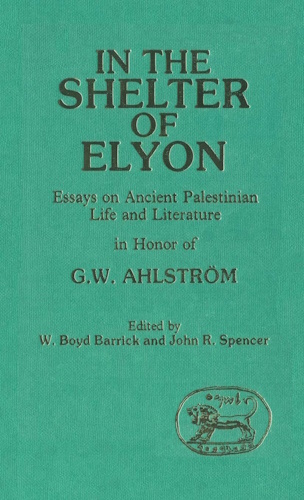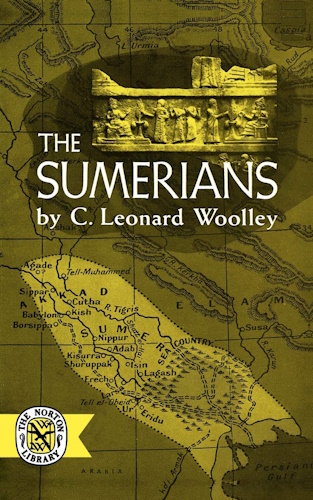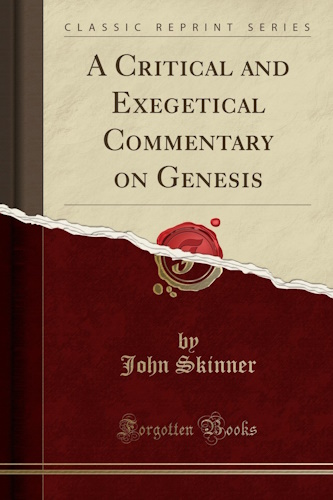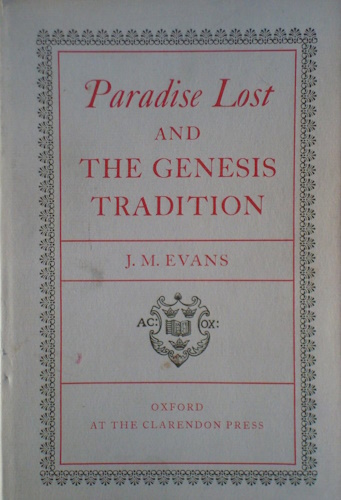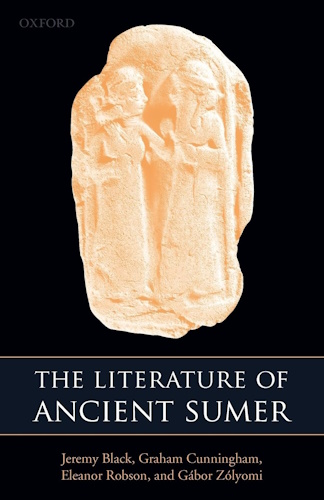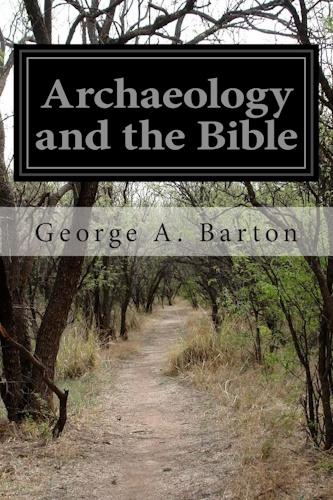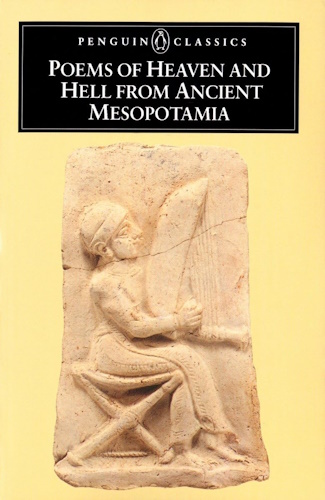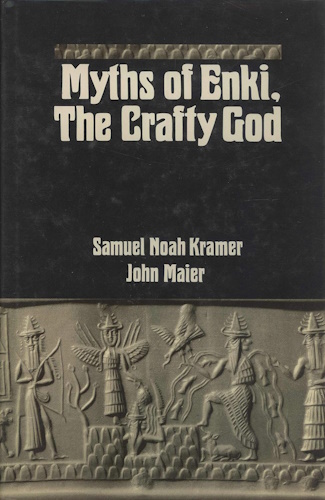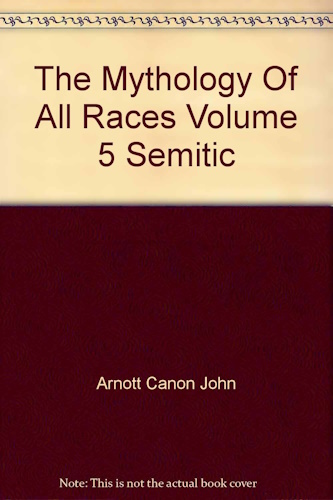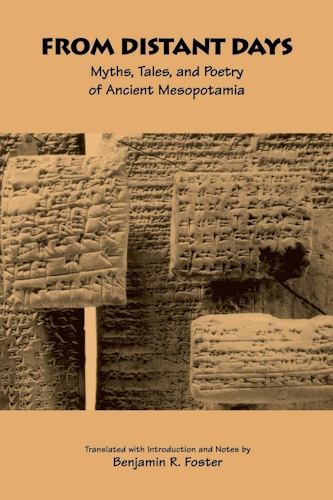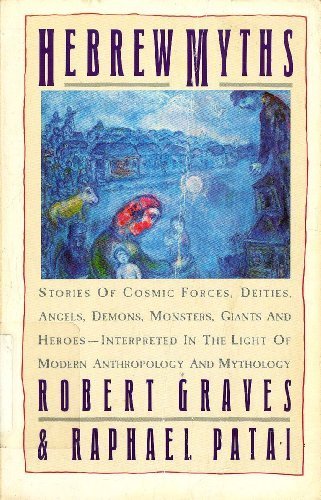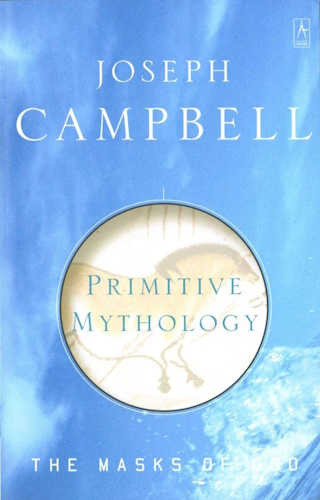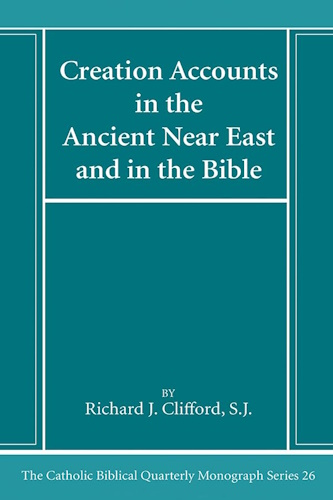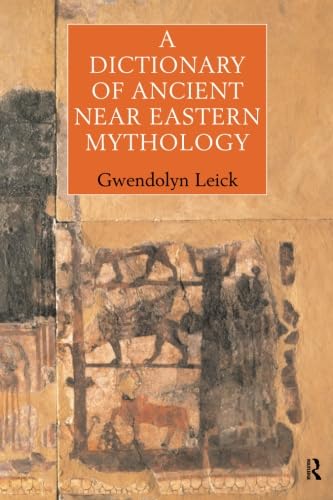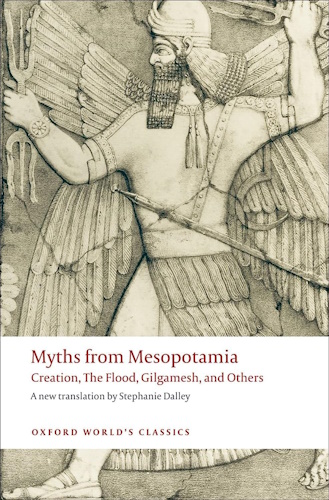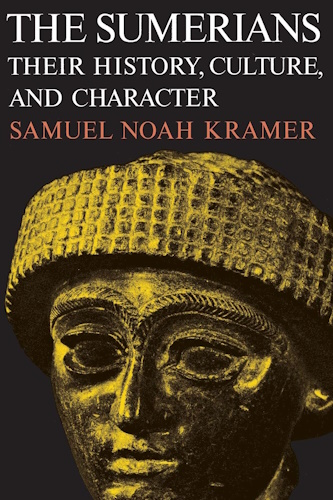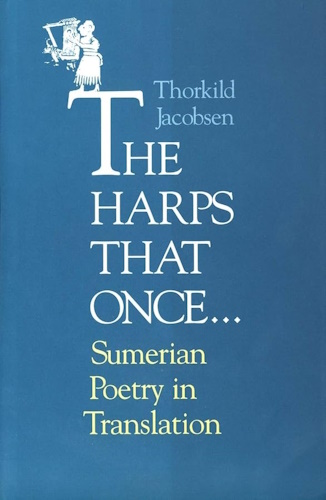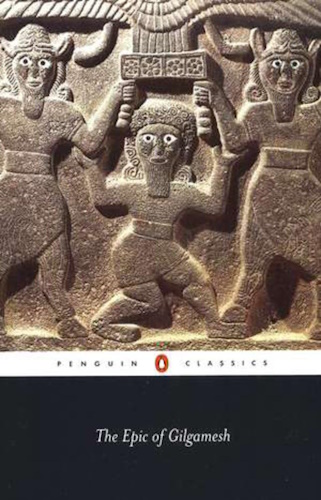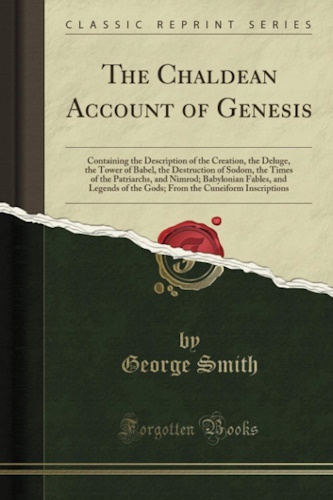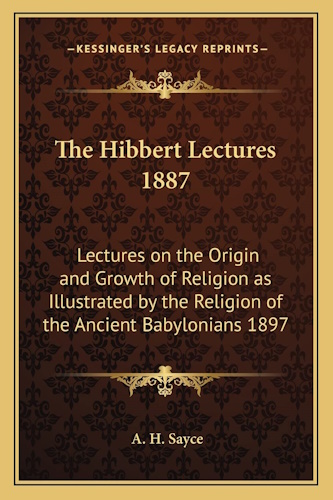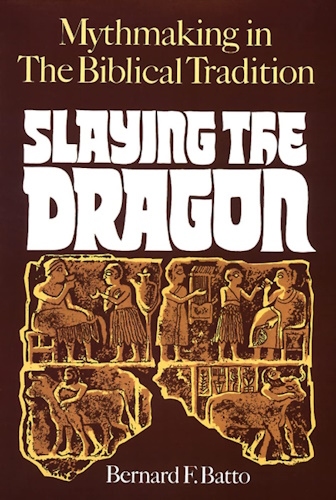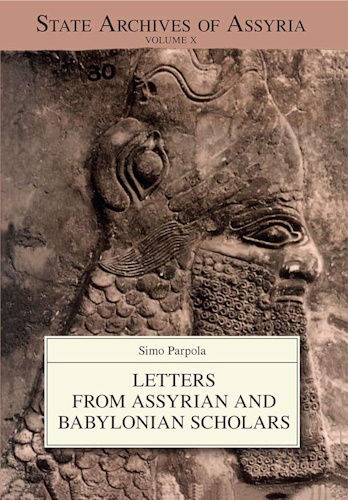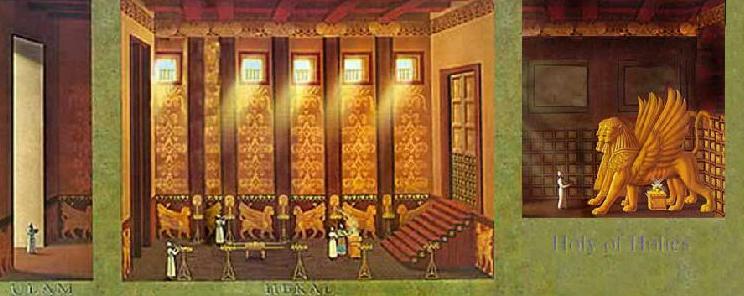![]()
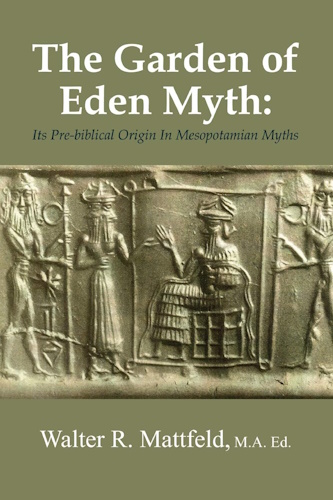
Bible Origins
Yahweh-Elohim
"The Fornicator God"
Who Became Spiritually
A "Eunuch God"
by
Walter Reinhold Warttig Mattfeld y d la Torre, M.A. Ed.
e-mail contact
23 September 2005
Revisions through: 06 July 2009
![]()
"Fornicate: consumate a love affair when not married" (p. 218. "fornicate." Albert & Lloyd Morehead, editors. The New American Webster Handy College Dictionary. New American Library. 1951, 1981. paperback).
The Hebrew Bible tells us that at the Temple of Jerusalem there existed cult prostitutes both male (Hebrew: qadesh) and female (qadeshah), and we are informed that Israel engaged in fornification rites "under every green tree" (cf. De 23:17-18; Lev 18:22-23; 1 Ki 14:23-24,15:12-13, 23:7). The word qadesh means "holy" and it was applied to cult prostitutes because they had been "religiously set aside or dedicated" to serve a god or goddess of a shrine or temple, their sexual favors bringing in revenues for the temple's upkeep.
All this is condemned by the writers of the Hebrew Bible. My interest here, _from an anthropological viewpoint_, is exploring the possibilities that the worship of Yahweh-Elohim may have originally involved rites of fornification and that he was in fact _originally_ a "god of fornification" or of sexual excesses. Some readers may not be aware that the Christian New Testament makes the claim that Yahweh-Elohim of the Old Testament (the Hebrew Bible) is not God the Father, but Jesus Christ in his role as the Logos or "the Word" (cf. John 1:1-14). Thus Jesus in his role as "the Word" -ipso facto- becomes "The Fornicator God" of the Old Testament.
Plato was outraged that Homer and Hesiod portrayed the Greek gods and goddesses engaging in acts of fornification as adulterers and adultresses, lusting after each other as well as their human counterparts. In his proposed new program of educating the young, these stories would not be preserved. Instead the gods and goddesses would be portrayed as paragons of virtue to inspire marital fidelity for later generations to emulate.
Although the earlier Mesopotamian and Canaanite myths portray some of the gods and goddesses as fornicators, later ages came to modify somewhat this notion, portraying some of these lustful dieties as virtuous and chaste. I suspect that the Hebrews went through a similar phase in regards to how they understood their God, Yahweh-Elohim.
My research and that of others suggests that Yahweh-Elohim is a later Hebrew reformating of motifs, epithets and feats ascribed to earlier gods and goddesses. I suspect a tension may have existed by Late Iron II times (the 8th-7th centuries B.C.) in that later reformers seeking a more chaste and virtuous God, denied the earlier presentation of him as a lusty fornicator of godesses as well as mortal women.
Rural folk are famed for their resistance to new concepts hatched in urban settings, the transforming of earlier sytems of belief. They would be "the last to buy into" the notion of Yahweh-Elohim having no lovers or sexual desires.
Lets begin with Yahweh. We are informed that this deity is not a goddess or a "she", nor an "it" (a sexless eunuch), but a God and a "He." Being a "He" one would expect this deity possesses sexual organs, a phallus (penis) and testicles, and that "He" possesses other male characteristics like a beard.
The Canaanite and Mesopotamian myths mention their male gods as possessing healthy sexual appetites, and they engage in sex with female goddesses, on occasion they even seduce mortal women as well. They father offspring, the gods and goddesses, as well as human children. For example, Gilgamesh the king of Uruk in Sumer, is portrayed as possessing a human father (Lugalbanda) and a goddess for a mother (Ninsun). He is even propositioned for sex by the goddess Ishtar, but rebuffs her proposal, noting how unfaithful she has been to other human lovers.
The word "God" in Bibles translated into English is sometimes derived from the Hebrew word _el_, and some scholars have speculated that the Canaanite god El (Ugaritic El or Bull-El) may have been later transformed by the Hebrews into Yahweh-Elohim (-im is a 'plural of majesty' meaning "gods", such plurals also exist in Canaanite, Phoenician and Assyrian and are applied to a single god as an honorific).
God is called El-Elohe-Israel, "El, the God of Israel" (Ge 33:20) suggesting for some scholars that El was one of Yahweh's names.
Canaanite myths (ca. the 13th-12th century B.C.) found at Ugarit (modern coastal Ras Shamras in Northern Syria) note that the "father of the gods" called El or Bull-El, is married to a goddess called Athirat meaning "she who treads upon the sea," and that he has 70 children (gods and goddesses) fathered on her. One account has him seducing two women and they bear him semi-divine sons (his phallus is praised in this myth as like a mighty bowstave). One of El's epithets is ab `adm, "the father of man," suggesting _to me_ that he may have even fathered mankind (however no Ugaritic myth presently exists explaining just how man came into being).
Professor Cross on the Canaanite god El (of ancient Ugarit, 13th-12 th century B.C.) seducing two women, impregnating them, causing them to bear him two sons, his lustfulness is noted, and his penis or "member" ("member" is the preferred "polite" scholarly language used in lieu of "penis" so as to not offend Christian sensibilities) is likened to a mighty bowstave in the Ugaritic myths:
"Long is `El's member like Sea's.
'El's member is like that of Flood...
`El bends his bowstave,
He draws his mighty shaft...
`El seduces his wives,
Lo, the two women cry:
O husband! husband! streched is your bowstave,
Drawn is your mighty shaft...
The women are (now) 'El's wives...
The two travail and give birth..."
"`El in this text lives up to the reputation found in Sakkunyaton's lore that he was a vigorous and prodigiously lusty old man as is fitting for the primordial procreator and patriarch."
(pp. 23-24. "`El and the God of the Fathers." Frank Moore Cross. Canaanite Myth and Hebrew Epic, Essays in the History of the Religion of Israel. Harvard University Press. 1973. Reprint of 1994)
Some scholars have suggested that Canaanite El evolved into the Hebrew God called El, a notion I am in agreement with.
Some scholars have suggested Yahweh-Elohim has absorbed some of the feats, epitheths, and personas of a fused Canaanite El and Baal. Baal is portrayed in one myth as bedding El's harlot wife Ashertu (according to a Hittite myth), with El's approval. He forewarns El that his wife is attempting to seduce him, El replies that Baal is to "humble her" by having sex with her! In another myth (at Ugarit) Baal mounts "his sister" Anat and has sex with her, she assuming the form of heifer and he that of a bull!
Some scholars have suggested that certain motifs or concepts appearing in Sumerian myths may have been transformed at a later time period by the Hebrews and applied to Yahweh-Elohim.
For example, in the Mesopotamian myths a god called Enki (Akkadian/Babylonian Ea) is responsible for creating man of clay to work in his fruit-tree garden at Eridu in Sumer where he dwells (another myth has Enki creating man of clay to work in the garden of the god Enlil at Nippur). Enki in another myth is portrayed giving his servant called Adapa 'forbidden knowledge' but denying him immortality. He warns him not to eat the bread and water which will be offered him in heaven by the god Anu, telling him he will die. In reality this food will give Adapa and via him all mankind, immortality. Adapa heeds Enki's warning and fails to consume the bread and drink and is thereupon "taken" by Anu's gate guards, Tammuz and Ningishzida, back to the earth where he will eventually die. In another myth Enki confuses the one human language of the world into a babble of tongues to spite the god Enlil of Nippur. In yet another myth Enlil is the principal god behind instigating a flood to destroy all of mankind. Enki thwarts Enlil by revealing the plan to a man called variously Ziusudra, Atrahasis or Utnapishtim (the Mesopotamian equivalent of Noah and the Ark) who is told to save himself, family and animals by building a great boat. I understand that Enlil who sent the flood and Enki who warned a man of the flood, are what lurks behind Genesis' presentation of Yahweh-Elohim, who sent a flood and warned only one man to build an ark to save himself, family and animals.
Of interest here, is the portrayal in some early Mesopotamian myths of Enlil and Enki as fornicators.
In a myth situated at Nippur, where En-lil ("Lord wind") lives, he is portrayed as raping a goddess (Nin-lil, "lady wind") who he espys bathing in the nude in the Euphrates. Other gods, who are outraged over this behavior, banish him for a time from Nippur, he later makes her his wife (according to the storyline she bathed in the nude inorder to entice/seduce him).
Leick:
"In one story, 'Enlil and Ninlil,' he impregnates the nubile Ninlil in the marshes, despite her warnings that she is 'too young for kissing' and he will get punished. Indeed...he is expelled from the city...The story of 'Enlil and Ninlil', with its riverside location and emphasis on impregnations, works within the paradigm usually associated with Enki: phallic eroticism and potency. But the point is emphasized that this unlawful intercourse does not happen in some licentious swamp region, but in Nippur, in a city that, perhaps more than any other in Mesopotamia, prided itself on learning, justice and moral standards. If Enlil is to be accepted as a Nippurian deity, he has to conform to the rules of civilized life."
(pp. 153-154. "Enlil." Gwendolyn Leick. Mesopotamia, the Invention of the City. London. Penguin Books. 2001)
Kramer and Maier on Enki's committing INCEST with his daughter, granddaughter and great-granddaughter on the Sumerian Paradise island called Dilmun:
"...Enki had eaten eight plants that Ninhursag had generated from his semen that overflowed on the loins of the goddess Uttu...As for Enki's sexual intercourse with the goddess Uttu ...it, was the last of a series of sexual exploits that began with his impregnating first Ninhursag herself, who then gave birth to the goddess Ninmu; this was followed by his impregnating his daughter Ninmu who then gave birth to the goddess Ninkurra; this in turn was followed by his impregnating his granddaughter Ninkurra, who then gave birth to his great-granddaughter Uttu."
(p. 22. "Enki and Ninhursag: A Sumerian Paradise Myth." Samuel Noah Kramer & John Maier. Myths of Enki, The Crafty God. New York & Oxford. Oxford University Press. 1989)
Kramer on the god of Nippur Enlil commiting incest ("union") with his mother, Ki, the earth:
"Conceived as gods in human form, An (heaven) was the male and Ki (earth) was the female. Their union produced the air god Enlil, who proceeded to separate heaven from earth, and while it was his father An who carried off heaven, he himself carried off his mother Ki, earth. The union of Enlil with Mother Earth set the stage for the organization of the universe, the creation of man and establishment of civilization."
(p. 66. "The Gods: Sumerian Mythology." Samuel Noah Kramer. In the World of Sumer, An Autobiography. Detroit. Wayne State University Press. 1986)
Bottero on the gods being feared not loved, they are masters and man is their servant:
"We could cite many more examples; they all reflect the same feelings of admiration, of respect, and of fear...Before them one bows down, one trembles...one submits to them. But one is not attracted to them, one does not love them."
(p. 210. "The Religious System." Jean Bottero. Mesopotamia, Writing, Reasoning, and the Gods. Chicago & London. University of Chicago Press. 1992)
Bottero on the Sumerian texts of the 3rd millennium B.C. portraying the gods and goddesses as sex-driven brutes and animals, but by the 2d millennium their act has been cleaned up and now they become or "evolve into" paragons of virtue:
"Parallel to this evolution of the excercise of authority by the gods, another evolution transformed their character...The gods were detached gradually from the phenomena of nature and of culture...they became increasingly refined, freed from what had been "too human," "too primitive," too rough, too unpolished, too wild and animal-like in their humanity. We know of myths in Sumerian, all from before the second millennium, that tell us, for instance, how Enlil in heat pursued the young and still virgin Ninlil in order to throw himself brutally upon her and to impregnate her, and this he did three times...It was so outrageous that his own colleagues were angered at such beastly behavior and exiled him to the Netherworld...the myths composed in Akkadian do not have the same coarse tone. Clearly the morals must have improved accordingly. But, in any case, starting from the beginning of the second millennium gods are only portrayed as very high, very dignified, majestic and honorable personalites. Even when they give in to a passion they remain respectable and imposing -as is proper for this "upper class" invested with power.
Not only the political changes, but also the evolution of morals, in particular under the increasingly powerful, later exclusive, Semitic influence, transformed the divine world little by little..."
(pp.215-217."The Religious System." Jean Bottero. Mesopotamia, Writing, Reasoning, and the Gods. Chicago & London. University of Chicago Press. 1992)
I suspect that just as Enlil's original lust-driven actions were unacceptable to later generations and he was transformed into "a paragon of virtue," so too the same happened to Yahweh (Yahweh being a later recast of Enlil who sent the Flood to destroy mankind).
Professor Saggs on some Mesopotamian gods slaying their fathers and wedding their mothers, in other words, engaging in _incest_ with their mothers:
"...a very obscure Babylonian myth, the Myth of Harab, in which a whole series of gods each deposes and kills (but does not castrate) his father, and then incestuously take as wife his own mother."
(p. 294. "Ancient Religion: Myths." H.W.F. Saggs. Civilization Before Greece and Rome. New Haven & London. Yale University Press. 1989)
If some scholars are correct in their speculations that Yahweh-Elohim is a reformatting and transformation of earlier gods, like En-lil (lord wind), En-ki (lord earth) and El, then the portrayals of these gods "as fornicators," may be what lies behind the Hebrew Bible's observation of fornification rites being engaged in, at Yahweh's temple at Jerusalem and "under every green tree" in the area. All this is to say -somewhat facetiously or tongue in cheek- if Yahweh has a phallus and testicles, _what is the point in having them if they aren't going to be "_used"_ by him?
Yahweh is portrayed in the Hebrew Bible as having NO SEXUAL DESIRES, nor does he have a goddess for a wife, or a female paramour ("lover"). He is spiritually "married" only to Israel, perhaps a later recasting (?) of the earlier myths that have Enlil, Enki and El being "married" gods; alternately, perhaps this might be an _inversion/reversal_ of the Mesopotamian concept of the marriage of a king (symbolizing his people) to the goddess Inanna/Ishtar, to obtain her blessings on the nation?
Professor Frymer-Kensky on Yahweh never being portrayed as a god with a sex-drive:
"The monotheist God is not sexually a male. He is not at all phallic, and does not represent male virility...God is not imagined below the waist...God is asexual..."he" is never sexed...God does not behave in sexual ways. In the powerful marital metaphor, God is the "husband" of Israel. But this husband-God does not kiss, embrace, fondle, or otherwise express physical affection for Israel, even within the poetic license of the metaphor...God is not imagined in erotic terms, and sexuality was simply not part of the divine order. God is not sexed, God does not model sexuality, and God does not bestow sexual power...To the Bible, the sexual and divine realms have nothing to do with each other. Indeed, the Bible is concerned to maintain their separation, to demarcate the sexual and sacred experiences and to interpose space and time between them. God would not reveal godself or God's purpose on Mount Sinai until Israel abstained from sexual activity for three days...in order to approach God one has to leave the sexual realm. The impurity provisions of the sacral laws also provide for time to elapse between engaging in sexual activity and coming into the domain of the sacred."
( pp. 188-189. "Sex in the Bible." Tikva Frymer-Kensky. In the Wake of the Goddesses, Women, Culture and the Biblical Transformation of Pagan Myth. 1993 Ballantine Books; 1992 The Free Press, a division of Macmillian, Inc.)
A pottery shard found at Kuntillet el Ajrud, an Iron Age II Caravansari (8th century B.C.) in the Lower Negev, shows a couple -believed by some scholars- to be Yahweh with "his Asherah," who is portrayed as a goddess with breasts, their arms interlocked at the elbows in a loving embrace. He is shown standing with a prominent phallus and testicles.
Some scholars have speculated that perhaps Moses was introduced to Yahweh via Jethro the Midianite. Professor Beno Rothenberg has suggested that the al-Qurayyah pottery he found at the Timna Valley in the Arabah, dating to Ramesside times (13th-12th centuries B.C.), may be Midianite. He understands that the Ramesside era Egyptians were processing copper ores in the area with Midianite help. To the degree some scholars understand the word kenite (Hebrew: qenite) may mean "a smith" (a worker of metal) and the Midianites are called kenites in the Bible, the connection is now possibly strengthened. Rothenberg understood that the Egyptians eventually abandoned Timna sometime in the reign of Ramesses V (ca. 1140 B.C.), but that the Midianites stayed on a while longer. He found a locally produced copper-cast idol of a male with a prominent phallus, which he speculated might be a "non-Egyptian" god. _I wonder_, could this god be in fact a Midianite Yahweh? All this is to say that Yahweh-Elohim has a "long-history" from Early Bronze Age (3rd millennium B.C.) to Iron Age I (12th century B.C.) times of being a God associated with fornification and sexual abandon.
Yahweh's (or Jesus Christ as the Logos or "the Word") last act of fornification is preserved in the New Testament when he fathers himself upon the virgin maid called Mary. Christian art shows this act iconographically as a white dove representing the "Holy Spirit" descending upon her. Interestingly, Zeus took the form of a white Swan to impregnate Leda, the wife of Tyndareus, king of Sparta, in the Greek myths (Did the early Christians re-work this Greek myth of a god impregnating in avarian form another man's wife?). We are _not_ told that God has "married" Mary, she is simply informed that she will become pregnant via the Holy Spirit. Consumated unmarried sex is by Webster's definition _fornification_ ergo God is a fornicator. He provides for his illegitimate child or bastard (Jesus) a stepfather in the form of Joseph the carpenter, telling Joseph Mary is pregnant with child by God and not by a man. Please click here for my artcle exploring the Bible's Messiah as being of an accursed bastard messiah lineage.
Many in the Hellenistic world of the 1st century A. D. would have no problems in accepting as fact, a god's fathering human children via a mortal woman. The Greek myths going back to Homer and Hesiod kept current the concept of an invisible lustful god (Zeus) fornicating with women (Semele) and producing human children (Dionysus). Some Romans apparently embraced these Greek notions, Julius Caesar was suppossed to be descendant of the goddess Venus, and his heir (nephew), Augustus Caesar (in who's lifetime Jesus was born), issued coins showing the goddess Venus semi-nude with bared breasts, claiming for himself via his uncle, a semi-divine ancestry.
From an anthropological point of view (which I embrace), _all gods_ are understood to be projections of the loves, hates and _lusts_, of a superstitious mankind onto imaginary dieties.
It is my understanding that Yahweh-Elohim is an amalgam of earlier gods, Mesopotamian, Canaanite, Phoenician and Syrian, their motifs, epithets, and feats being ascribed by the Hebrews to their God. These gods were originally portrayed as having sexual organs and fathering children (the gods and goddesses) as well as seducing mortal women (female goddesses seducing mortal men) and having human children. Some scholars have suggested that the bene elohim "sons of God," (Ge 6:1-4) having sex with mortal women is an allusion to divine beings, the sons of the Canaanite god El (Bull El).
It is my understanding that the Hebrew Bible has correctly preserved the notion that ancient Israel did in fact engage in ritual "acts of fornification" with male and female prostitutes at the Temple in Jerusalem and "under every green tree," and that these practices are _relics of an earlier archaic concept_ (Late Bronze [1560-1200 B.C.] and Early Iron I [1240-1000 B.C.]?) of Yahweh-Elohim as a lusty "fornicator-god. "
_If_ the copper idol of the phallic god found at Timna in the Arabah is in fact a Midianite version of Yahweh, then as late as Ramesside times (the 12th century B.C., Iron Age I), images of this god existed. The later drawing of Yahweh with exposed genitals with arms interlocked with the goddess Asherah at Kuntillet el Ajurud (Iron Age II, 8th century B.C.) would be evidence that _NOT ALL Israel_ had embraced the notion -yet- that images of Yahweh were forbidden and that _he had no sexual urges_ or needs for a female paramour (Asherah) like the other gods and goddesses of the nations about Israel and Judah.
The Hebrew Bible portrays Yahweh's "wife" or "bethrothed" as HARLOT ISRAEL (Isa 1:21; Jer 2:20, 3:1-8; Ez 16:15-16; Hos 2:5, 3:3, 4:15). Perhaps this is an _inversion_ of the Hittite myth in which El's harlot wife is "humbled" by Baal via sex? That is to say, later Hebrew savants have manipulated or recast Israel's past history and religious beliefs somewhat for ideological purposes. In Canaanite myths El has a wife and is the father of some 70 gods and goddesses via SEXUAL procreation, _that is to say his phallus and testicles are put to good use unlike Yahweh's_. El's progeny are portrayed as constantly feuding and fighting with each other and at times even contemptuous of their progenitor. What the later Hebrew prophets have done -perhaps- is taken these myths and transformed them, making El's rebellious children, the gods and goddesses, into Yahweh-Elohim's rebellious sons and daughters, the men and women of Israel and Judah. El's harlot wife also becomes the harlot wives Israel and Judah. The Hebrew Bible claims that Hittites dwelt in Canaan at the time of its conquest under Joshua (De 7:1, 20:17; Jos 1:4) and that later Israel married these "inhabitants of the land" and worshiped their gods and goddesses (Judg 3:5). Perhaps the Hittite myth of El's harlot wife (cf. Ez 16:45-46 where Harlot Jerusalem's father is a Hittite and mother an Amorite) was passed on to the Israelites via their Iron I (1230-1000 B.C.) Hittite/Canaanite fathers and mothers, to resurface later in the reforms of a late Iron II Israel and Judah of the 8th-7th centuries B.C. as a harlot Israel and Judah grieving her spiritual "husband" Yahweh?
It is my understanding that Genesis-Kings was composed by one author in the Exile circa 560 B.C. The "condemnation" of Israel for observing fornification rites is by this "late" author, and I understand that his account has preserved "a period in transition" (the 8th-7th centuries B.C.) when some reformers attempted -apparently unsuccessfully- to present a "new more chaste" image of Yahweh to the populace. These reformers had in effect "neutered" or "castrated" Yahweh, making him somewhat into a "sexless eunuch," as he is portrayed as having _no sexual urges_like a eunuch_; his only "yearnings" being for his "bride" Israel to return his plighted love by worshipping him faithfully and obeying his commandments and ordinances (Ez 16:53-63). So it is my understanding that Yahweh-Elohim was transformed from a lusty fornicator god into a eunuch god with no sexual urges. Of interest here is the presentation of Jesus Christ in the New Testament as _possessing no sexual urges as well_, despite the fact he was aged only about 30 years at the time of his death, which would have been a period of sexual vigour and desire for most men.
The Bible suggests that male and female prostitutes worked in Solomon's Temple:
2 Kings 23:7 RSV
"And he broke down the houses of the male cult prostitutes which were in the house of the LORD, where the women wove hangings for the Asherah."
Please click here for my article on Asherah possibly being a fusion of Hathor the Egyptian goddess of love and sex who had cloth hangings wove and hung in her temples in her honor and the Syrian/Mesopotamian goddess Ishara, another goddess of love and procreation.
Deuteronomy 23:17-18 (RSV) forbids male and female prositutes working in the Temple at Jerusalem to raise funds for its upkeep:
"There shall be no cult prostitute of the daughters of Israel, neither shall there be a cult prostitute of the sons of Israel. You shall not bring the hire of a harlot, or the wages of a sodomite into the house of the Lord your God in payment for any vow..."
The Anchor Bible Dictionary (David Noel Freeman, editor. New York. Doubleday. 1992 [6 vols.]) has two articles on the subject which may be of of further interest, each provides a bibliography on the subject regarding the differing views on whether or not cultic prostitution existed in the Ancient Near East and Israel:
Elaine Adler Goodfriend. "Prostitution (OT)." (pp. 505-510. Vol. 5)
Karel Van Der Toorn. "Prostitution (Cultic)." (pp. 510-513. Vol. 5)
Both Goodfriend and Van Der Toorn acknowledge that there are two schools of
thought. The older that sacred prostitution did exist, however this notion has been challenged by some scholars of late (the 1970's and later).
Goodfriend:
"It has long been assumed that the terms qadesh/qedeshah allude to the practice of cultic prostitution in Israel, yet recent studies seriously question this widespread assumption...The supposed role of the Mesopotamian qadishtu as a cult prostitute has been thought to provide proof that her Hebrew counterpart, the qedeshah, likewise had a sexual function in the cult."
(p. 507. Vol. 5)
Van Der Toorn:
"Prostitutes operating as it were in the shadow of the temple, then, existed in ancient Israel. However, any links between the latter and a hypothetical fertility cult, it need hardly be said, belong to the domain of speculation. Prostitution as a source of profits for the temple? -yes; prostitution as an integrating part of fertility rituals? -no. In a number of texts, the fulfillment of a vow appears to have been one of the motives for occasional prostitution." (p. 511. Vol. 5).
"Generally, the attention of OT scholars has been monopolized by the qadishtu, clearly cognate with Hebrew qedeshah. The connection between the two terms is frequently said to go beyond the level of etymology; both would have been designations of the "cult prostitute." A survey of the texts in which qadishtu occurs, however, shows that the term is frequently used, especially in the 1st millennium B.C.E., for a wet nurse or a midwife. One should therefore avoid narrowing down her activities to those of a prostitute. Nevertheless, the term does at times refer to a prostitute...In short, both the evidence from the OT and the Akkadian and Ugaritic data do not support the hypothesis of "cultic prostitution." Ancient Near Eastern civilizations were familiar with prostitutes working in the service of the temple, as they were with the phenomenon of prostitution as a means to pay vows. In neither case, however, does there seem to be a conscious connection with fertility rites."
(p. 512. Vol. 5)
It appears to me that the "jury is still out," some still opt for prostitution as a form of revenue for the temple, some deny this.
Black and Green (1992) on the _possibility_ of "cultic prostitution" in Mesopotamia:
"Prostitutes are mentioned together with various groups of women engaged in more or less religious activities. Inana/Ishtar seems to have been presented as a protective goddess of prostitutes. In cult songs the goddess sometimes refers to herself as a prostitute, and her temple is metaphorically called a tavern...Numerous objects from Mesopotamia ranging in date from prehistoric to Middle Assyrian times depict scenes of sexual intercourse, which, rightly or wrongly, have been interpreted as representations of ritual sex, in particular the sacred marriage...Analysis is made difficult both because the few remarks in written sources are vague and obscure, and because much of the iconographic material is unpublished (a reflection of modern academic etiquette)...On Middle Assyrian lead figurines depicting intercourse, the man stands and the woman always rests upon a high structure, usually interpreted as an altar. These figurines may very likely represent ritual intercourse...they are probably in some way associated with the cult of Ishtar (Inana) as goddess of physical love and prostitution, and were, in fact, found in her temple at Asshur...From the same building come models of male and female sexual organs: phalli in stone and clay...and clay models of the female pubes and vulva. All these objects doubtless had some amuletic property, and since sexual scenes involving only the copulating couple and no other persons are very rare, it may be that most of the representations are of some kind of cultic rather than private sex..."
(pp. 150-152. "prostitution and ritual sex." Jeremy Black & Anthony Green. Gods, Demons and Symbols of Ancient Mesopotamia, An Illustrated Dictionary. University of Texas Press, Austin [published in co-operation with British Museum Press, London]. 1992)
Of additional interest is that the Bible suggests Israel and Judah worshipped the "Queen of Heaven," right up to the beginning of the Exile (ca. 587 B.C.) and in Mesopotamian texts this is Sumerian Inanna (Akkadian Ishtar) who is famed as a patroness of whores and temple harlots and for making men into women and women into men in cultic activities (they engaging in cross-dressing of the sexes). Gilgamesh rebuffs her offer of sex citing the human lovers she has taken and abused in the past. If Judah's "Queen of Heaven" is indeed modeled after Inanna/Ishtar then sexual activities and prostitution, male and female, would have most probably existed at Jerusalem's temple.
Jeremiah characterizing Judah as a harlot, worshipping other nation's gods:
Jeremiah 3:6-13 RSV
"The Lord said to me in the days of king Josiah: "Have you seen what she did, that faithless one, Israel, how she went up on every high hill and under every green tree and there played the harlot?...commiting adultery with stone and tree...scattered your favors among strangers under every green tree..."
Jeremiah 7:18 RSV
"The children gather wood, the fathers kindle fire, and the women knead dough, to make cakes for the queen of heaven; and they pour out drink offerings to other gods..."
Jeremiah on the Queen of Heaven being honored by Judah while in Egypt after having fled Judah for fear of the Babylonians:
Jeremiah 44:17-25 RSV
"Then all the men who knew that their wives had offered incense to other gods, and all the women who stood by, a great assembly, all the people who dwelt in Pathros in the land of Egypt, answered Jeremiah: "As for the word which you have spoken to us in the name of the Lord, we will not listen to you. But we will do everything that we have vowed, burn incense to the queen of heaven and pour out libations to her, as we did, both we and our fathers, our kings and our princes, in the cities of Judah and in the streets of Jerusalem; for then we had plenty of food, and prospered, and saw no evil. But since we left off burning incense to the queen of heaven and pouring out libations to her, we have lacked everything and have been consumed by the sword and by famine." And the women said, " When we burned incense to the queen of heaven and poured out libations to her, was it without our husband's approval that we made cakes for her bearing her image and poured out libations to her?"
Professor Frymer-Kensky on the Queen of Heaven cult and Inanna (Note: Sumerian nin.an.na means "Lady of Heaven," her Akkadian/Babylonian name was Ishtar):
"...the goddess Inanna (called also by the Semitic name Ishtar), who serves the important function of modeling a role that women were not expected to fill and that was not considered socially desirable. She represents nondomesticated woman, and exemplifies all the fear and attraction that such a woman elicits. She is the exception to the rule, the woman who does not behave in societally approved ways, the goddess who models the crossing of gender lines and the danger this presents."
(p. 25. Tikva Frymer-Kensky. In the Wake of the Goddesses, Women, Culture and the Biblical Transformation of Pagan Myth. 1993 Ballantine Books [Fawcett Columbine], New York. First edition 1992 by the Free Press a division of Macmillan Inc.)
"In her lack of encumbrances, Inanna lives essentially the same existence as young men. Like them, she is called "hero" and "manly," Like them, and even more than they, she loves war and seeks lovers. She is a woman in a man's life. This makes her unlike all other women, and places her at the boundary of differences between man and woman. Inanna transcends gender polarities, and is said to turn men into women and women into men. The cult of Inanna exemplifies her role as boundary-melder (and therefore boundary-keeper) of the gender line, for at her festivals men dress as women and women as men, and cultic dancers wear outfits that are men's clothes on the right and women's on the left. In this cultic confusion of genders, and in the hymnic acknowledgement of it, Ishtar serves not only to transcend gender, but ultimately to protect it...Inanna's freedom from domestic encumbrances and the restlessness that it engenders may also account in part for the ferocious energy with which she confronts gods and humans. She represents a woman not occupied with social responsibilities...She is dangerous, fearsome, and threatening because of her freedom, and yet, at the same time, appealing and attractive. In her lack of encumbrances, Inanna is free to be the ultimate femme fatale."
(p. 29. Tikva Frymer-Kensky)
"Sexual attraction is in the hands of the goddess Inanna/Ishtar, the nubile young woman, unemcumbered by children. She is not preoccupied or distracted by family resopnsibilities and is therefore restless and interested in relations with men. Pubescent girl, bride, bored young wife, or prostitute, she does not metamorphose into a mother, either psychologically or physically, and remains the object of men's desire. She, for her part, is attracted to males (human, and even animal). Inanna is the very embodiment of sexual attraction and lust, the one on whose presence all sexual desire and copulation depends...Inanna/Ishtar represents the attraction necessary for all sexual copulation, regardless of its societal purpose or value. This is sexuality -raw sexual experience and power- unbounded by human conventions, not constrained by marriage. Even the boundaries of human-divine or divine-animal (and thereby human-animal) divisions do not restrain Inanna's sexuality and she is shown as the lover of humans and horses. But Inanna is no outlaw. Unrestrained "free love" is her domain, but so is married, socially-conforming love. Inanna/Ishtar represents and gives patronage to the sexuality of the prostitutes, but as Ishhara, one of her names, she is the patron of martial sexuality, to whom the bed of bride and groom is devoted.
Inanna is the sexual joy (hi-li) of the cosmos, and also the goddess who brings joy of life to humankind. The power of sex is the power of joy, and Inanna brings happiness to children, brings dances to young women. inanna is the spirit of play. Her feasts are festivals of games, dances and music, and she herself is sha-at me-li-si-im, "the one who is joy." Inanna's sexual essence is the source of joy and play for all."
(pp. 47-48. Tikva Frymer-Kensky)
Leick on Inanna the Queen of Heaven and her cult celebrating sex in Uruk:
"...Inanna...is also celebrated as the Queen of Heaven, the mistress of the sky, and her emblem is the planet Venus...A number of texts refer to Inanna's cult and festivals...Her ritual personnel also incorporated a contingent of transsexuals and perhaps homosexuals, as well as numerous women...in service to the love goddess. The late Babylonian poem of Erra...has to say about Uruk:
Even Uruk, the dwelling of Anu and Ishtar,
city of prostitutes, courtesans, and call girls...
party-boys and festival people who changed
masculinity to feminity to make the people of Ishtar revere her...
Inanna stands for the erotic potential of city life...She frequents taverns and alehouses, where men could meet single women, and she is said to prowl the streets of Kullab in search of sexual adventure. Copulation in the streets was apparently a normal and joyful event...there existed a positive paradigm of 'free love' that was associated with Inanna-Ishtar...the Mesopotamian poets present Uruk as a city of festivals, its streets full of singing and dancing, and they refer to its population of beautiful and voluptuous women, women with luxuriantly curly hair and available women in general."
(pp. 58-60. "Inanna's Uruk." Gwendolyn Leick. Mesopotamia: The Invention of the City. London. Penguin Books. 2001, 2002)
Leick on veiled allusions to the goddess Ishtar's (Sumerian Inanna) love affairs with animals as perhaps being allusions to bestiality (humans engaging in sex with animals), quoting below Gilgamesh's reasons for refusing Ishtar's request for sex:
"Not one of [your] lovers [have you loved] forever!
Not one of your favourites escaped [your snares]!
Tammuz, lover of your youth
You decreed anuual mourning for him.
You loved the colorful allallu bird,
But you hit him and broke his wing...
You loved the lion of unmatched strength,
(Then suddenly) you dug seven and seven pits for him.
You loved the horse, reliable in battle,
You decreed the pointed whip and reins for him...
You loved the shepherd, the herdsman...
(Then suddenly), you struck him and turned him into a wolf,
So that his own boys pursued him
And his dogs snapped at his hind quarters..."
"This passage includes some aetiological tales which are only known from this one text. Ishtar's affairs with animals especially are without parallels. Harris (1990:226, note 39) took them as subtle 'allusions to the boundlessness of Ishtar in the range of her lovers: bird, wild animal, domestic animal, and human.' "
(pp. 261-262. "Love and Eros in Akkadian Narrative Literature." Gwendolyn Leick. Sex and Eroticism in Mesopotamian Literature. London & New York. Routledge, Taylor & Francis Group. 1994, 2003)
According to the Bible Yahweh-Elohim sends a flood to destroy mankind, but he warns one man, Noah, to build a boat to save himself, family and animals for a new beginning. In the Mesopotamian myths it was the god Enlil who is the chief instigator of the flood and it is the god Enki who warns one man, Atrahasis, to build a great boat to save the seed of man and animalkind. I understand these two gods, Enlil and Enki have been fused together and recast as one god, Yahweh-Elohim.
Enlil _raped_ his "future" wife Ninlil espying her bathing in the nude in a nearby canal at Nippur, whereas Enki raped or seduced his daughter, grand-daughter and great-grand-daughter at Dilmun. In recasting these gods who were responsible for the sending of the flood and warning one man to build boat to withstand the deluge, they have been transformed into one god, Yahweh-Elohim who has _no_ sexual urges.
Apparently the Hebrews objected to the Mesopotamian portrayal of Enlil and Enki as sex-driven brutes and animals, both of whom in myths were responsible in part for the creation of mankind and for his demise with a flood. So they changed the myths by having no sexual urges like the Mesopotamian gods for Yahweh who thus does not engage in any "embarrassing" foreplay or sexual escapades with female goddesses or with women.
Conclusions:
I understand that the Hebrew God Yahewh-Elohim is a later recast and transformation of earlier gods from Mesopotamia, Syria, Phoenicia and Canaan.
These gods were portrayed as possessing healthy sexual appetites and they had sex with not only goddesses but mortal women and their offspring were not only deities but humans as well.
The Hebrews' God has no sexual needs or urges, so he doesn't need a wife or a lover, hence I have likened him to being a castrated eunuch god.
Christianity which evolved from Judaism followed along in this tradition portraying Christ in his role as the Word of Logos in the Old Testament as having no sexual urges and needs either.
Jesus urged those who could do so, to draw nearer to God by becoming "eunuchs for the sake of the kingdom of heaven" (Matthew 19:12) denying their sexual urges and eschewing marriage (Catholic priests and Nuns follow in this tradition).
From Professor Frymer-Kensky's observations on the "Queen of Heaven" one can see why "all" Israel and Judah would be "smitten" by and worship her (the kings, the princes, and the people as noted by the prophet Jeremiah) and why the Hebrew prophets had a hard time selling a "sexless eunuch god" to their people.
Professor Sayce (1887) of Oxford University on EUNUCHS being part of the staff serving Ishtar (Sumerian Inanna the 'Queen of Heaven') at her temple in Uruk (Genesis' Erech), the prostitutes being called the "consecrated maidens of Ishtar" (qadesha: "consecrated"):
"Merodach mourned...the tablet goes on to describe the despatch of the terrible plague-god to Erech, "seat of Anu and Istar, the city of the choirs of the festival-makers and consecrated maidens of Istar," who "dreaded death," for the nomad Suti of the desert had combined against their state. The EUNUCH-PRIESTS were now compelled to bow the face before another deity than the peaceful Istar, who "cried and was troubled over the city of Erech."
(p. 312. "Prometheus and Totemism." Archibald Henry Sayce. The Hibbert Lectures 1887: Lectures on the Origin and Growth of Religion as Illustrated by the Religion of the Ancient Babylonians. London. Williams & Norgate. 1897. 4th edition)
Sayce on Ishtar's male priests becoming eunuchs, "devoted their manhhood" as a rite in her honor and service:
"...Erech, the modern Warka, the city specially consecrated to the goddess of love. Erech, we are told in the story of the plague-demon Nerra, was "the seat of Anu and Istar, the city of the choirs of the festival girls and consecrated maidens of Istar," where in E-Ana, "the house of heaven," dwelt her priests, "the festival-makers who devoted their manhood in order that men might adore the goddess, carrying swords, carrying razors, stout dresses and flint knives," "who minister to cause reverence for the glory of Istar."
(pp. 184-185. Sayce. 1897)
Professor Saggs (1965) on cultic prostitutes, including EUNUCHS, possibly serving at the Temple of Solomon in Jerusalem (emphasis mine):
"A word should be said about another group of temple personnel. These were the religious prostitutes, not only women BUT ALSO MEN WHO HAD BEEN MADE EUNUCHS. Ishtar was, as we have said, the goddess of love, and the sexual practices in which these people were concerned were principally in her honour. There is good reason to think that similar practices were at one period carried on in the temple built by Solomon in Jerusalem, though there it met with vigorous opposition from the followers of Yahweh. In Babylonia and Assyria such practices involved no stigma..."
(p. 196. "Religion." H. W. F. Saggs. Everyday Life in Babylonia and Assyria. New York. Dorset Press. 1987 reprint of 1965 edition issued by B. T. Batsford Limited)
The Harab myth portrays a god murdering his father and then having sex with his mother and sister, _acts of incest_. Quite clearly, the gods were not imagined as paragons of virtue and righteousness, they possessed all the unflattering qualities found in mankind, for the gods were made in man's image. I draw the conclusion that Man _cannot_ be better than his Creators, the gods, his immorality has been passed on to him by his immoral gods in whose image he was made. There can be "no Fall from innocence" for man as appears in the Book of Genesis in the Holy Bible.
(For ease of reading I have _not_ reproduced the scholarly ellipses ( ) and brackets [ ] for restored sections of the text):
"Harab, in the first beginnings, took Earth to wife,
to found a family and excercise lordship his heart urged him...
Harab gave himself clear title to the lordship in Dunnu,
but Earth lifted up her face to Sumuqan, his son,
and said to him: "Come, let me love thee!"
Sumuqan took Earth his mother, to wife, and
Harab, his father he killed...
Sumuqan took over the lordship of his father, and
Sea, his older sister, he took to wife, but
Gaiu, the son of Sumuqan, came, and
killed Sumuqan..
Sea, his mother, he took to wife;
also, Sea murdered Earth, her mother...
Gaiu, son of Gaiu took Idu (River), his own sister, to wife;
Gaiu senior and Sea, his mother he killed...
He seized the kingship and the lordship for himself."
(p. 165. "The Harab Myth." Patrick D. Miller Jr. "Eridu, Dunnu, and Babel: A Study in Comparative Mythology. pp. 143-168. Richard S. Hess & David Toshio Tsumura. Editors. "I Studied Inscriptions from before the Flood": Ancient Near Eastern, Literary, and Linguistic Approaches to Genesis 1-11. Winona Lake, Indiana. Eisenbrauns. 1994)
The Queen of Heaven was apparently worshipped by Israel and Judah at Solomon's Temple in Jerusalem as late as the Babylonian Exile; she was not portrayed as a chaste, virtuous woman. At times she is portrayed as an immoral woman, unfaithful to her husband and taking lovers then tossing them away for another lover. In other words the cult of sexual immorality was celebrated and embraced at the Temple of Jerusalem with its sacred male and female prostitutes which later reformers like Isaiah and Jeremiah attempted rather unsuccessfully to counter with "a new image" of a chaste, virtuous god, Yahweh, who had no sexual desires, like a eunuch. So Solomon's Temple was nothing more than a bordello, a whore house, that later reformers attempted to unsuccessfully overthrow by getting rid of the male and female prostitutes and getting rid of the Queen of Heaven and her consort Dumuzi (biblical Tammuz mentioned by Ezekiel), proclaiming Yahweh as the One God, who has no sexual urges that need to be satisfied like mankind's.
I pretty much see the Hebrew Bible (Old Testament) as a polemic attempting to discredit and overthrow the Queen of Heaven cult embraced at Solomon's Temple, blaming it and its practioners for Israel and Judah's demise and Exile for having offended Yahweh.
For me, the writers of the Hebrew Bible sought the overthrow and replacement of a system of earlier (Late Bronze and Iron Age) religious belief by presenting Yahweh as a god who has no sexual needs.
The celebration of the "sexual urge" or "biological need to reproduce oneself" implanted in all of us by Nature (man and beast), was apparently a major focus of the Queen of Heaven Cult and observed by all of Israel and Judah up to and in the course of their respective exiles (722 and 587 B.C.).
Probably most surprising of all is that I understand that the Queen of Heaven cult did _not_ come to an end in the Exile.
It survived and was replanted in Judah with the return from the Exile (ca. 539 B.C.), some of its motifs and features being preserved apparently among "heretical" Jewish groups which would eventually morph into Christianity; certain Queen of Heaven cult motifs being recast and ascribed to Christ: such as the notion (1) of his resurrection after three days and nights, a motif originally associated with Inanna/Ishtar, the Queen of Heaven; (2) The notion of Christ being a bridegroom who gives up his life to be a surrogate in the underworld effecting for his "bride" (the Church) a release from the power of death, is a recast of Dumuzi (Ezekiel's Tammuz) who unwillingingly becomes his "bride's" (Innana) surrogate in the underworld, effecting her release and return to the edin that surrounds Uruk; (3) Dumuzi's resurrection to life and dwelling in the edin associated with Uruk presages Christ telling his followers they will return to the earth from the underworld to enjoy life with him in Eden or Paradise; (4) Enki/Ea, the god of Eridu in Sumer is credited as possessing the "bread and water of life" and he brings Inanna back to life by having these items sprinkled on her dead corpse, effecting her release back to the earth's surface and the edin at Uruk. Enki/Ea created man, placed him in edin to care for his garden, denied him immortality, and brought back to life and restored to edin Inanna/Ishtar, the Queen of Heaven. Enki/Ea warned one man (variously called Atra-Khasis, Utnapishtim, Ziusudra) of a flood and to build a boat and save the seed of man and animals for new beginning like Noah. Enki/Ea is, then, part and parcel of the Queen of Heaven Cult and its notions of a resurrection from death and new life in an earthly edin (in Sumer) for man and for woman.
Earlier (cf. above) I noted that rural folk are famed for their conservatism and that they are usually the last to buy into new concepts of a religious nature, in our case the giving up of the Queen of Heaven for a chaste eunuch-god like Yahweh. The Bible tells us that not all of Judah was carried off into the Exile, the poorest people "of the land" apparently tillers of the soil, farmers, or rural folk were left to care for the vineyards and orchards and wheat fields (2 Kings 25:12, 21-22), some of whose bounty was probably rendered to the Babylonians as a yearly tribute. Perhaps the Queen of Heaven cult _survived_ with these people? That is to say it _never_ came to an end in Judah with the Exile. I understand that Genesis-2 Kings was composed in the Exile circa 560 B.C. and this composition condemns the Queen of Heaven and sacred prostitution. When Ezra arrives in Judah with the Torah, which is part of this 560 B.C. composition, he notes that the people are marrying foreign wives, and it appears that they are _unaware_ that this practice is condemned by Moses. Is it possible that originally there was no condemnation of foreign marriages, and that this notion surfaced in a 560 B.C. Torah as an explanation for why an Exile by the pro-Yahweh prophets? This would mean that the Queen of Heaven cult was _not_ condemned in Judah before the Exile by the people of the land (rural folk) nor by the nobility, but only by a few religious reformers like Isaiah, Jeremiah and Ezekiel and the anonymous composer of the 560 B.C. Primary History (Genesis-2 Kings).
I understand that Judaism and Christianity are nothing more than "heavily veiled transformations" of the Queen of Heaven Cult which was originally situated in Sumer, in Mesopotamia (modern Iraq) in the 4th-1st millenniums B.C.
Almost a hundred years ago, as early as 1911, Radau (born 1873 in Germany, emigrated to U.S. in 1890, Ph.D. from Columbia University, worked as an Assyriologist at the University of Pennsylvania, Philadelphia by 1911) had surmised that motifs from the Mesopotamian Queen of Heaven cult (Inanna and Dumuzi) had been recast and assimilated to Jesus Christ in the Christian Easter/Lenten Traditions (in this work he also noted that Inanna, his Nin-anna meaning "lady of heaven," bore the Sumerian epithet nin edin, "lady of edin" while her husband Dumuzi bore the epithet mulu edin, the "lord of edin"):
"There is no myth in any of the known religions which, as regards its importance, can be compared with the so-called Dumuzi-Ninanna myth of the early Sumerians. In it are rooted...the prototype of our Christian lenten season and of the death and resurrection of Christ."
(p. 1. Vol. XXX. "Introduction." Hugo Radau. Sumerian Hymns and Prayers to the God Dumu-zi, or Babylonian Lenten Songs From the Temple Library at Nippur. Munchen, Deutschland. Rudolf Merkel, Erlangen. 1911)
The title "Queen of Heaven" is still with us to this day, having been awarded to Mary, the mother of Jesus by Roman Catholicism. Needless to say, most Catholics would be horrified to learn that the title awarded Mary was _originally_ associated with a goddess (Inanna/Ishtar, subsumed under Asherah/Ishara) famed for being a harlot who had many lovers, animals and men, who was looked upon as the patron goddess of whores and prostitues, as well as homosexuals, transvestites and eunuchs at Solomon's Temple in Jerusalem.
Millions of Jews, Christians and Moslems today are blissfully _unaware_ of all of the above as they with religious zeal slaughter each other for "God and Country."
This esoteric knowledge is known only by a few scholars who quietly publish their findings in professional journals away from the public eye so as to not antagonize and upset the faithful and thus avoid being subjected to the indignant wrath of defenders of the faith (Jewish, Christian and Moslem Apologists) who, in the past, have resorted to public ridicule, harrassment and threats of those who would dare suggest their God, Yahweh, Christ, or Allah, is a recast of earlier Mesopotamian gods and goddesses.
For the Hebrews man's rebelliousness is traced to the actions of Adam and Eve. They excercised their free wills and chose to not obey God. Christians understand this rebellion to be a "fall from innocence" and introduction of sin into the world. Contra the Christian understanding the Mesopotamian myths suggest that man's sinfulness was implanted within him at the moment of his creation. He is, in a sense, a victim of the gods.
The gods in some myths (cf. above) are portrayed as being unethical and immoral. They engage in extra-marital sex with each other, they have sex with their off-spring (children), they rape goddesses and engage in sex with human beings, both men and women.
How then can man, _made in the image of the gods_ be "better than" his Creators? That is to say how can it be that a God would expect that mankind, made in his image, "ought" to lead a moral, ethical and righteous life if this Creator is engaged in activities like lying, bloodshed, rape, fornification and incest?
There can be "no fall of man from a state of pristine innocence" in the 3rd millennium B.C. Mesopotamian myths because man has been created in the image of the gods and goddesses who are immoral themselves. Please click here for my article on "Man's Fall From Innocence" and the Mesopotamian myths this notion was derived from (Enkidu and Adapa).
Professor Bottero (cf. above) noted that by the _beginning of the 2d millennium B.C._ under Semitic influence, the earlier 3rd millennium B.C. myths of the Sumerians underwent a transformation, no longer were the gods and goddessses portrayed as sex-driven brutes, the Semitic temperment recast them as paragons of virtue. It is worth noting that Abraham is dated by some scholars to this general period of time (anywhere from 2200-1700 B.C.), the beginning of the 2d millennium B.C. Perhaps Abraham's notion that God is chaste and has no sex-drive is indebted to Semitic notions of this same general period that denied the gods were sex-driven, ignoble brutes who had created man to ruthlessly exploit him? In other words the biblical story of Israel is situated primarily in the worlds of the 2d-1st millenniums B.C. (Abraham to the Babylonian Exile), a time when the 3rd millennium B.C. notions of the gods being sex-driven brutes has been repudiated and replaced with the gods being paragons of virtue. As some scholars have put it:"a text reflects to some degree the historical world views in which it was created" and the 560 B.C. Primary History (Genesis-2 Kings) reflects a Semitic world that had recast its gods into paragons of virtue (with the notable _exception_ of the 3rd milllennium B.C. "hold-over" the Queen of Heaven, known variously under the names of Inanna/Ishtar/Asherah/Ishara/Qetesh).
From a Secular Humanist point of view I understand man's anti-social behaviors are because he is an animal, possessing animal urges and impulses. The animals display similar behaviors like man. The behaviors man shares with animals are probably a part of his animal DNA.
Sin or "right and wrong" are _not_concepts of the animal world, they were created by man to prevent the weak from being oppressed by the strong.
Society _needs_ a concept of "right and wrong" to survive or we return to the animal world from whence we evolved.
Pictures and Illustrations:
Please click here for a photo of a possible phallic Yahweh of the Midianites from Har Timna in the Arabah south of the Dead Sea in Ramesside times (13th-12th centuries B.C.).
Please click here and scroll down for a photo of a possible phallic Yahweh with his Asherah (Iron Age II, 8th century B.C.) from Kuntillet el Ajrud in the Negev.
Please click here for a drawing of the Middle Assyrian period lead votive believed by some to show a sex act atop an altar.
Bibliography:
For El's seduction of two women cf. pp. 23-24. "`El and the God of the Fathers." Frank Moore Cross. Canaanite Myth and Hebrew Epic, Essays in the History of the Religion of Israel. Harvard University Press. 1973. Reprint of 1994. Also cf. pp.123-127. "Shachar and Shalim and the Gracious Gods." J. C. L. Gibson. Canaanite Myths and Legends. Edinburgh, Scotland. T. & T. Clark, Ltd. 1956, 1978.
For Enlil's rape of a goddess and banishment cf. "Enlil and Ninlil" pp. 47-48. Gwendolyn Leick. A Dictionary of Ancient Near Eastern Mythology. Routledge. London & New York. 1991, 1998 and p. 153. "Enlil." Gwendolyn Leick. Mesopotamia, the Invention of the City. London. Penguin Books. 2001.
For Enki's sexual encounters in Dilmun with his daughter, granddaughter and great-granddaughter cf. p. 22 in Samuel Noah Kramer & John Maier. Myths of Enki, The Crafty God. New York. Oxford University Press. 1989. ISBN 0-19-505502-0.
For Baal's sexual encounter with El's (El-qunirsha's) wife Ashertu, cf. p. 39. "(El)qunirsha." Gwendolyn Leick. A Dictionary of Ancient Near Eastern Mythology. London & New York. Routledge. 1191, 1998.
For Baal's sex with his "sister" Anat cf. pp. 116-118, "Poems About Baal and Anath." James B. Pritchard. Editor. The Ancient Near East, An Anthology of Texts and Pictures. Princeton, New Jersey. Princeton University Press. 1958.
For scholars suggesting Yahweh has absorbed the feats, attributes and personas of earlier gods cf. the following works:
Norman Cohn. Cosmos, Chaos, and the World to Come, The Ancient Roots of Apocalyptic Faith. New Haven and London. Yale University Press. 1993.
Frank Moore Cross. Canaanite Myth and Hebrew Epic, Essays in the History of the Religion of Israel. Cambridge, Massachusetts. Harvard University Press. 1973.
Tikva Frymer-Kensky. In the Wake of the Goddesses, Women, Culture and the Biblical Transformation of Pagan Myth. 1993 Ballantine Books; First edition: 1992 The Free Press, a division of Macmillian, Inc.
Samuel Noah Kramer. In the World of Sumer, An Autobiography. Detroit. Wayne State University Press. 1986.
T. H. Gaster. "Myth, Mythology." p.481. Vol. 3. G.A. Buttrick. Editor. The Interpreter's Dictionary of the Bible. Nashville, Tennessee. Abingdon Press. 1962.
John Gray. Near Eastern Mythology, Mesopotamia, Syria and Palestine. London. Hamlyn. 1969.
Robert Graves & Raphael Patai. Hebrew Myths, the Book of Genesis. New York. Greenwich House. [1963, 1964], reprint 1983.
S. H. Hooke. Middle Eastern Mythology. London. Penguin Books. (1963) 1981.
Stephen Herbert Langdon. Mythology of All Races, Semitic. (Vol. V). Boston. Archaeological Institute of America. 1931.
Gwendolyn Leick. Sex and Eroticism in Mesopotamian Literature. London & New York. Routledge, Taylor & Francis Group. 1994, 2003.
Patrick D. Miller Jr. p. 165. "The Harab Myth." in "Eridu, Dunnu, and Babel: A Study in Comparative Mythology. pp. 143-168. in Richard S. Hess & David Toshio Tsumura. Editors. "I Studied Inscriptions from before the Flood": Ancient Near Eastern, Literary, and Linguistic Approaches to Genesis 1-11. Winona Lake, Indiana. Eisenbrauns. 1994.
Hugo Radau. Sumerian Hymns and Prayers to the God Dumu-zi, or Babylonian Lenten Songs From the Temple Library at Nippur. Munchen, Deutschland. Rudolf Merkel, Erlangen. 1911.
Archibald Henry Sayce. The Hibbert Lectures 1887: Lectures on the Origin and Growth of Religion as Illustrated by the Religion of the Ancient Babylonians. London. Williams & Norgate. 1897. 4th edition.
p. 294. "Ancient Religion: Myths." H.W.F. Saggs. Civilization Before Greece and Rome. New Haven & London. Yale University Press. 1989.
p. 196. "Religion." H.W.F. Saggs. Everyday Life in Babylonia and Assyria. New York. Dorset Press. 1987 reprint of 1965 edition issued by B. T. Batsford Limited.
Mark S. Smith. The Early History of God: Yahweh and the the Other Dieties in Ancient Israel. Grand Rapids, Michigan. William B. Erdmans Publishing Co. 1990, 2002. ISBN 0-8028-3972-X.
Mark S. Smith. The Origins of Biblical Monotheism, Israel's Polytheistic Background and the Ugaritic Texts. New York. Oxford University Press.2000.
![]()
![]()
Disclaimer:
Some material presented will contain links, quotes, ideologies, etc., the contents of which should be understood to first, in their whole, reflect the views or opinions of their editors, and second, are used in my personal research as "fair use" sources only, and not espousement one way or the other. Researching for 'truth' leads one all over the place...a piece here, a piece there. As a researcher, I hunt, gather and disassemble resources, trying to put all the pieces into a coherent and logical whole. I encourage you to do the same. And please remember, these pages are only my effort to collect all the pieces I can find and see if they properly fit into the 'reality aggregate'.
Personal Position:
I've come to realize that 'truth' boils down to what we 'believe' the facts we've gathered point to. We only 'know' what we've 'experienced' firsthand. Everything else - what we read, what we watch, what we hear - is what someone else's gathered facts point to and 'they' 'believe' is 'truth', so that 'truth' seems to change in direct proportion to newly gathered facts divided by applied plausibility. Though I believe there is 'truth', until someone representing the celestial realm visibly appears and presents the heavenly records of Facts And Lies In The Order They Happened, I can't know for sure exactly what "the whole truth' on any given subject is, and what applies to me applies to everyone. Until then I'll continue to ask, "what does The Urantia Book say on the subject?"
~Gail Bird Allen
![]()
![]()

